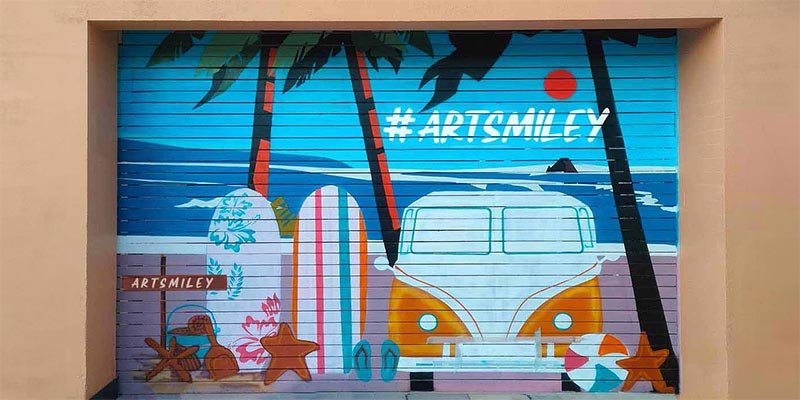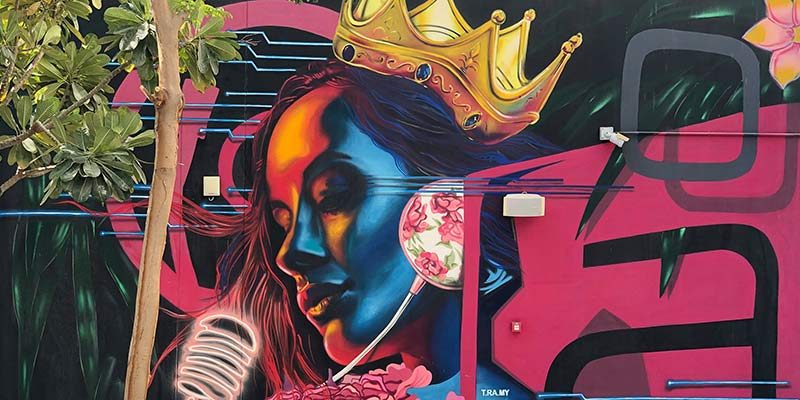What Are the 7 Types of Public Art?
Public art is more than just decoration. It is an integral part of our cities, streets, and public spaces. It fosters cultural identity, enhances urban environments, and creates meaningful interactions between people and their surroundings. From towering public art sculptures to immersive interactive public art pieces, the diversity of public art is vast and inspiring. But what are the primary types of public art, and how do they contribute to our communities? Let’s explore the seven main forms of public art and how they shape urban landscapes.
1. Sculptures: The Timeless Appeal of Public Art Statues
Sculptures are among the most recognized and enduring forms of public art in cities. Crafted from various materials such as bronze, stone, metal, and even recycled elements, sculptures bring a sense of permanence and grandeur to public spaces. Whether commemorating historical figures or showcasing abstract designs, they become landmarks that define a city’s identity.
One of the most famous public art sculptures is the “Cloud Gate” in Chicago’s Millennium Park. This mirrored, bean-shaped installation captivates visitors with its reflection of the skyline and dynamic interaction with the public. Similarly, the Statue of Liberty stands as an emblem of freedom and democracy, proving the enduring power of sculptural art in public spaces.
2. Murals: Storytelling Through Public Art Murals
Murals transform the walls of buildings into vibrant storytelling canvases. Whether they depict cultural heritage, political statements, or abstract beauty, murals engage communities by turning cityscapes into open-air galleries. They are one of the most accessible forms of public art in urban spaces, breaking barriers between artists and the public.
Diego Rivera’s murals in Mexico City and Banksy’s provocative street art are prime examples of how murals can shape social discourse. These large-scale paintings breathe life into city walls, often revitalizing neglected areas and turning them into cultural hotspots.

3. Installations: Immersive Public Art Installations
Public art installations are large-scale, site-specific artworks that invite interaction and exploration. Unlike sculptures, which are often viewed from a distance, installations create immersive experiences that encourage public participation. These artworks use diverse materials, including lights, sounds, and digital elements, pushing the boundaries of traditional art forms.
For instance, “The Gates” by Christo and Jeanne-Claude transformed New York’s Central Park with a striking display of orange fabric structures, altering the park’s landscape and engaging viewers in a novel visual experience. Such innovative public art projects redefine how people interact with art in public spaces.
4. Street Art: The Raw Energy of Modern Public Art Trends
Street art is a contemporary and often rebellious form of public art that thrives in urban environments. It includes graffiti, stencil work, and wheat-paste posters that challenge traditional art norms. Emerging as a voice for counterculture movements, street art has now gained widespread recognition for its artistic and social impact.
Notable artists like Shepard Fairey and Keith Haring have propelled street art into mainstream consciousness, demonstrating its ability to convey powerful messages. In cities like Berlin, London, and New York, street art has become a defining feature of the urban aesthetic.
5. Functional Art: Where Public Art Meets Architecture
Functional public art seamlessly integrates with architecture and urban design, enhancing spaces both aesthetically and practically. From artistically designed benches and fountains to elaborately sculpted bridges and bus stops, this type of art enriches everyday life while serving a functional purpose.
A perfect example is the mosaic-tiled benches in Park Güell, Barcelona, designed by Antoni Gaudí. These colorful, curving structures not only serve as seating areas but also contribute to the park’s whimsical aesthetic. Public art in architecture adds creativity to spaces while maintaining usability.

6. Digital and Light Art: The Future of Public Art Designs
With technological advancements, digital and light-based artworks have emerged as a futuristic form of modern public art trends. These installations use LED lights, projections, and interactive elements to create mesmerizing displays that change dynamically.
One of the most iconic examples is “The Bay Lights” in San Francisco, a large-scale LED installation that transforms the Bay Bridge into a luminous masterpiece. Such projects highlight the growing role of technology in public art installations, offering new ways to engage audiences in the digital age.
7. Environmental and Land Art: Art That Works with Nature
Environmental and land art harmonizes with natural landscapes, using materials like earth, stones, and vegetation to create artworks that evolve over time. These installations emphasize sustainability and a deep connection between art and nature.
Spiral Jetty by Robert Smithson, located in Utah’s Great Salt Lake, is a striking example of outdoor public art that interacts with its environment. By blending art with natural landscapes, environmental artists encourage viewers to rethink their relationship with nature.
The Impact of Public Art on Communities
Beyond aesthetics, public art plays a crucial role in social and economic development. It fosters civic pride, attracts tourism, and revitalizes public spaces. Cities investing in public art projects near me often see increased foot traffic, enhanced local business engagement, and stronger community identity.
Public art also serves as a platform for cultural expression and dialogue. By reflecting the diverse narratives of a community, it creates a shared space where history, tradition, and innovation converge. Whether it’s a towering statue, a colorful mural, or an interactive light installation, each form of public art contributes uniquely to the cultural fabric of a city.
Transform Your Space with Art Smiley’s Public Art Services
Are you looking to bring impactful, visually stunning public art designs to your community? Art Smiley specializes in curating and installing customized public art in cities, offering bespoke solutions that enhance urban landscapes and public spaces. From public art sculptures to interactive public art, our team of expert artists and designers craft compelling pieces that engage and inspire.
Contact Art Smiley today to explore how we can transform your space with innovative public art solutions that blend creativity, culture, and functionality.
